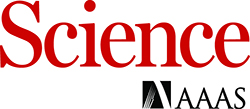 Japan &Science AAAS: For the Future of Science and Innovation in Japan
Japan &Science AAAS: For the Future of Science and Innovation in Japan
September 20, 2018
SCIENCE LITERACY FOR ALL PEOPLE
The keynote speech, entitled “Science Literacy for all People,” was given by Dr. Rush Holt, CEO, American Association for the Advancement of Science (AAAS), and Executive Publisher of the Science family of journals. Throughout his presentation Dr. Holt stressed the importance of scientific literacy, specifically emphasizing that AAAS’ interest is not limited to education for future scientists and people who support science in scientific agencies, but for the benefit of society at large.
With an emphasis on “good science” informing public policy, public decisions, and public discourse, AAAS has endeavored to promote and integrate scientific education into society. Such actions are not limited to the United States, they are world-wide activities. AAAS works internationally to promote and advance the benefits of “good science.” Dr. Holt referenced Policy Alert (a weekly newsletter focusing on policies for science or about science) as a typical AAAS product supporting the mission to promote the best science to inform policy.
The goal of advancing good science is also promoted at the AAAS Annual Meeting which, in addition to researchers, brings together more than 700 writers and reporters. At this annual gathering AAAS distributes awards to scientists for the best science writing, mentoring, and public engagement. In addition, the AAAS Golden Goose Awards recognize research that ostensibly sounds silly but has a deep impact on society. AAAS seeks to advance science through a variety of other ways, such as its participation in the March for Science, a global event which reminds the public about the relevance of science. Dr. Holt emphasized that AAAS is a nonprofit organization and explained that the AAAS motto “Force for Science” means that the purpose of AAAS is not to advance scientists, but rather to work with scientists to advance science for the benefit of all people. AAAS’ world-wide membership currently exceeds 120,000 and encompasses all fields of science and engineering.
Publishing is one way to advance science, in fact the publication of premier journals is one of AAAS’ core activities. Launched a few years ago, Science Advances is fast becoming an essential general interest research journal, and new journals, such as Science Robotics and Science Immunology, will be of great interest to scientists and researchers in Japan.
AAAS has started two new programs for scientific communication: SciLine, a service for writers and journalists, connects writers who want to “get the science right” in their stories with the help of expert scientists who can check the facts and provide context. In its first year, SciLine has registered thousands of scientists and has assisted hundreds of scientists. “EpiCenter,” another new program, was announced at the Japan meeting, it will bring scientific evidence to a wide range of policymakers so that informed decisions can be made.
To advance science for everyone, scientists should inform society that science is relevant to everyone. Science produces remarkable inventions, however, science’s greatest invention is science itself, that is to say, in the right circumstances, thinking like a scientist is valuable for anyone. Dr. Holt argued that scientists should work not to simply hand the results of science to the public, but rather to hand the promise, the power of science, science itself, to the public. Science requires certain conditions to thrive: Freedom to exchange ideas, adequate financial support, sufficient facilities and organizations, and diversity of people. Policymaking is not just a diplomatic or economic issue, but a scientific issue. Such conditions are essential to build public understanding and an appreciation of science.
Scientists may think communication is simply stating the facts, however, AAAS’ workshops in science communication for graduate students revealed that without close attention to the audience, even communication between scientists can be challenging. Moreover, different techniques are required when communicating with journalists, legislators, policymakers, and the public. The biggest challenge is communicating science to a disinterested public, one which can believe that evidence and opinion are the same thing.
Therefore, through communication scientists should advance science, knowledge, and human well-being. This communication may go beyond their own research interests, but by referencing knowledge obtained from their own research and in clear, simple, and even exciting ways, scientists should try to develop the structure of communication for science in general and how much it helps human welfare. The important story is that the problems of the day, including climate, food, health, and security, can be addressed through science. In addition, scientists should try to explain to the public how they are solving these problems.
Albert Einstein said, “the eternal mystery of the universe is its comprehensibility.” A further mission of scientists is to achieve remarkable ideas like Einstein’s by removing bias and communicating to the public about knowledge. If the evidence and reliability of science are ignored, technology may appear threating, however, as Carl Sagan said, if you live with an appreciation of science, you will not live in a “demon-haunted world.” In other words, “science literacy” is more than helping the public understand technology, it is helping the public put science in its rightful place in history, and making each member of the public a full citizen, capable of pondering the enduring questions of human meaning and the power of evidence.
Dr. Holt concluded the speech by saying “the most important thing is to communicate that there is a path to tomorrow's knowledge and that the path is open to everyone.” The path is science and the scientific way of thinking.



